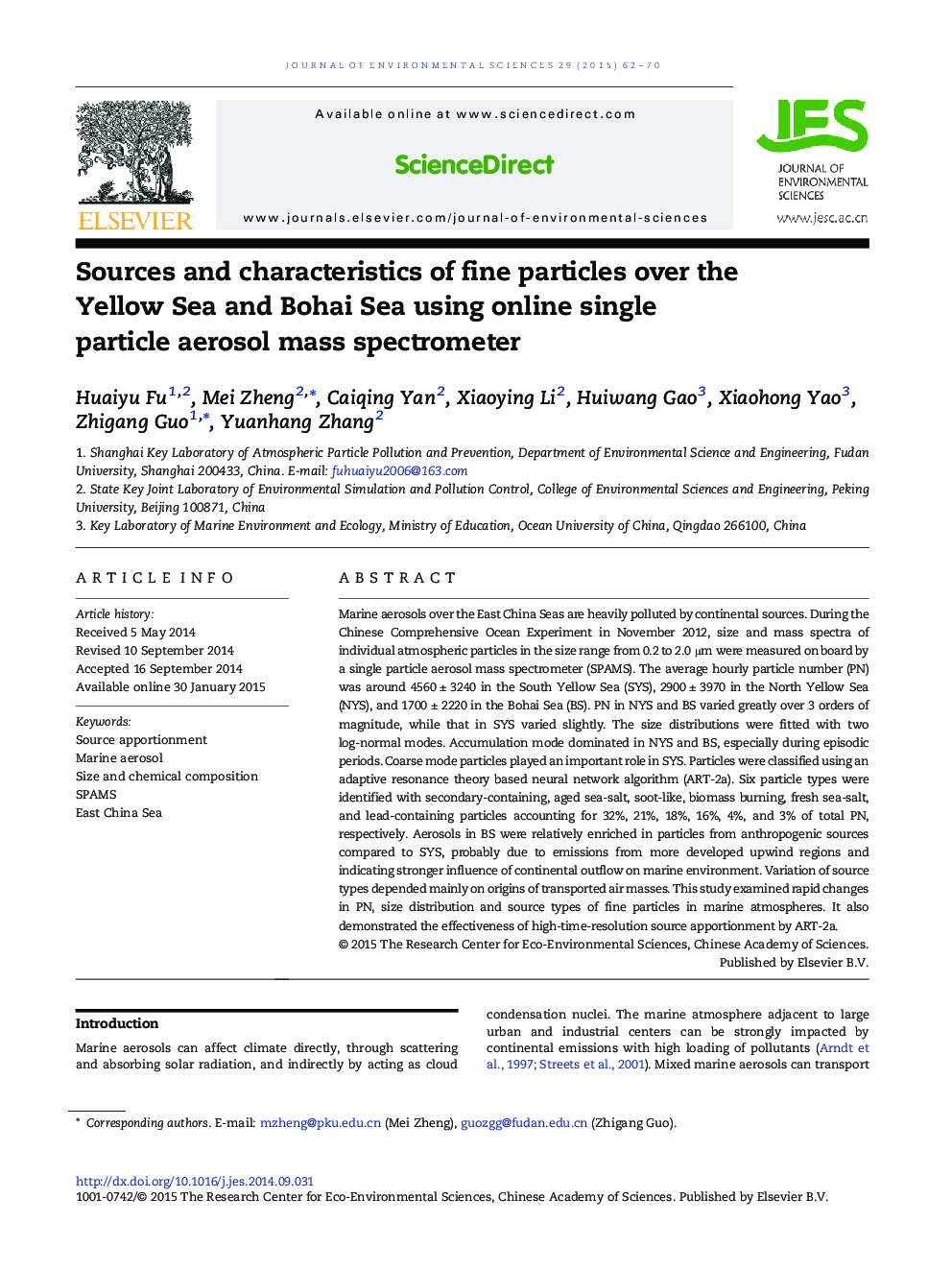| کد مقاله | کد نشریه | سال انتشار | مقاله انگلیسی | نسخه تمام متن |
|---|---|---|---|---|
| 4454210 | 1620824 | 2015 | 9 صفحه PDF | دانلود رایگان |

Marine aerosols over the East China Seas are heavily polluted by continental sources. During the Chinese Comprehensive Ocean Experiment in November 2012, size and mass spectra of individual atmospheric particles in the size range from 0.2 to 2.0 μm were measured on board by a single particle aerosol mass spectrometer (SPAMS). The average hourly particle number (PN) was around 4560 ± 3240 in the South Yellow Sea (SYS), 2900 ± 3970 in the North Yellow Sea (NYS), and 1700 ± 2220 in the Bohai Sea (BS). PN in NYS and BS varied greatly over 3 orders of magnitude, while that in SYS varied slightly. The size distributions were fitted with two log-normal modes. Accumulation mode dominated in NYS and BS, especially during episodic periods. Coarse mode particles played an important role in SYS. Particles were classified using an adaptive resonance theory based neural network algorithm (ART-2a). Six particle types were identified with secondary-containing, aged sea-salt, soot-like, biomass burning, fresh sea-salt, and lead-containing particles accounting for 32%, 21%, 18%, 16%, 4%, and 3% of total PN, respectively. Aerosols in BS were relatively enriched in particles from anthropogenic sources compared to SYS, probably due to emissions from more developed upwind regions and indicating stronger influence of continental outflow on marine environment. Variation of source types depended mainly on origins of transported air masses. This study examined rapid changes in PN, size distribution and source types of fine particles in marine atmospheres. It also demonstrated the effectiveness of high-time-resolution source apportionment by ART-2a.
Online source apportionment of particles over East China Seas was first presented with secondary-containing, aged sea-salt, soot-like, biomass burning, fresh sea-salt, and lead-containing particles accounting for 32%, 21%, 18%, 16%, 4%, and 3% of total particle number, respectively. Six source types were identified with most abundant accumulated secondary particles. More anthropogenic soot-like and lead-containing particles enriched in Bohai Sea.Figure optionsDownload as PowerPoint slide
Journal: Journal of Environmental Sciences - Volume 29, 1 March 2015, Pages 62–70